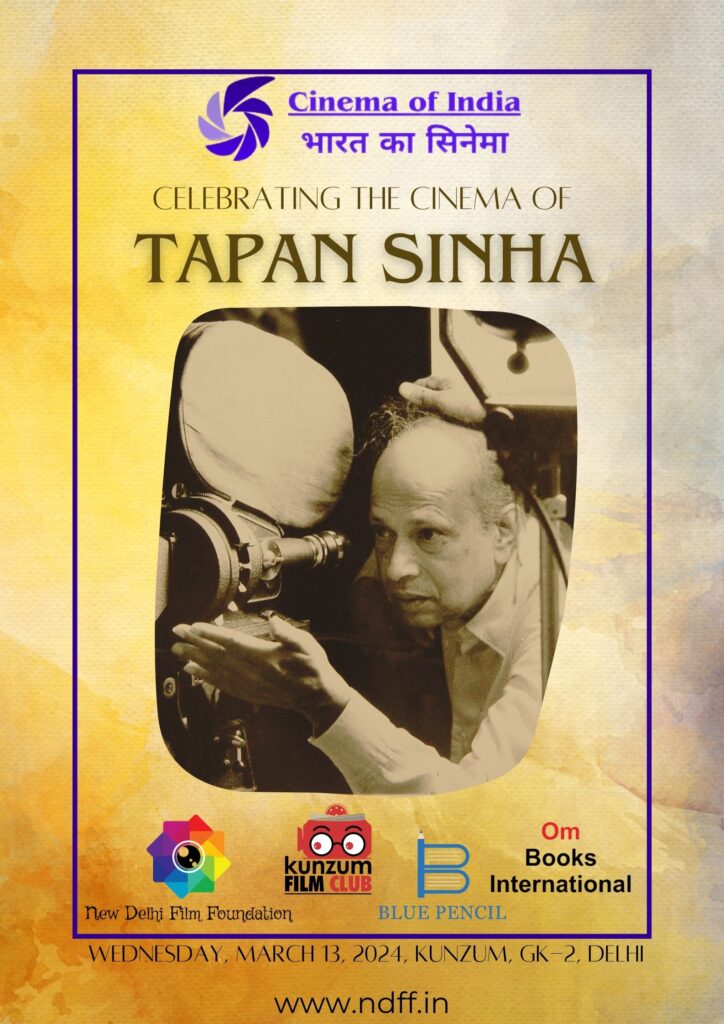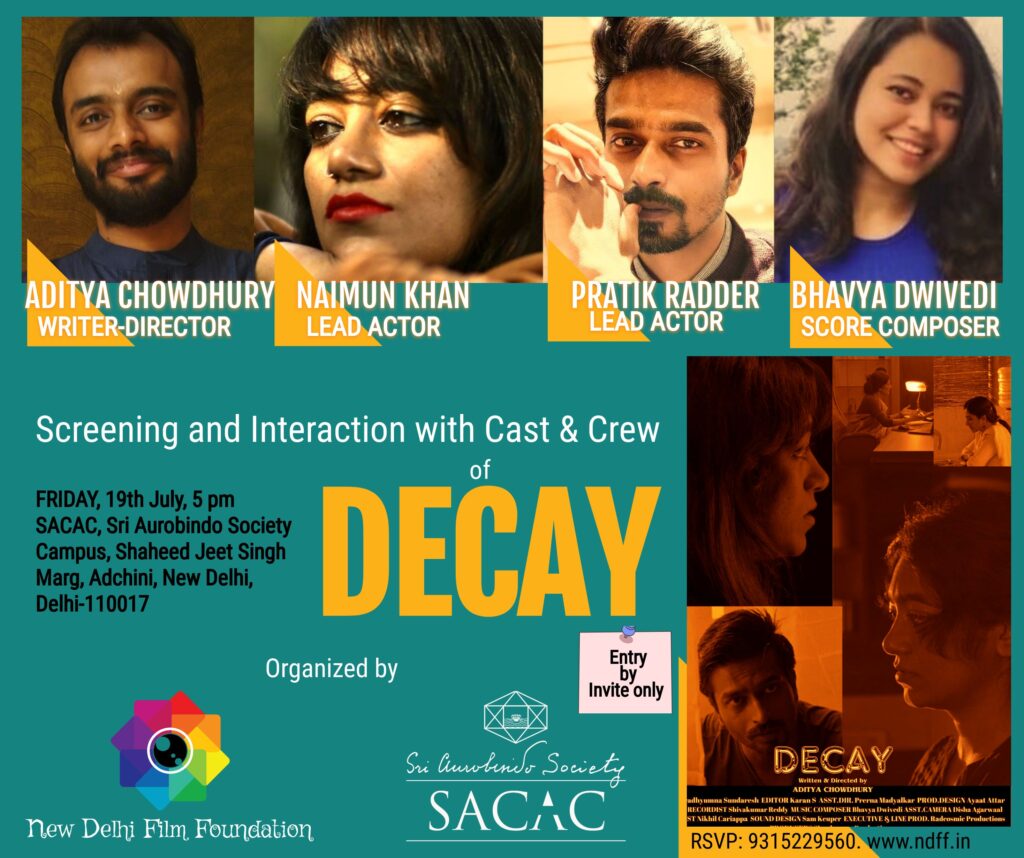“I HAVE COLLECTED AROUND 20,000 POSTERS SPANNING 100 YEARS OF INDIAN CINEMA” – SMM AUSAJA


This is an interview of SMM AUSAJA, a well-known collector of film posters, lobby cards and so on with several coffee table books on his posters of AMITABH BACHCHAN and also one of JAVED AKHTAR. The interview is taken by Shoma A. Chatterji very senior film critic and scholar, based in Kolkata. Shoma specializes in Indian and also Bengali cinema. She has won the National Award twice for best writing on cinema and has authored 26 titles of which 14 are on Indian cinema.

Meet SMM Ausaja. He is a crazy man He has not saved anything from his earnings because he has always concentrated on adding to his collection of film posters from a very young age. But you cannot be a collector unless you are also a little crazy. Aren’t we all? But let us hear it from SMM himself who has already to his credit, two coffee-table books on posters of Indian films. Ausaja is a very warm and accessible person who is ready to lay out his life story with one word from your end, “posters.”
When did your collective instincts begin, how and why?
When I was eleven years old, Mr. Tandon of Novelty theatre, Lucknow, gave me a poster of Tinnu Anand’s Kaalia starring Amitabh Bachchan. Like most of my generation growing up during the 1970s and 1980s, I was deeply influenced by Amitabh Bachchan’s screen image. I would imitate his dress sense, his hairstyle and also mug up his dialogues to be recited on special occasions.
How many film posters did you gather and along how many years?
Difficult to quantify … About 20000 since 1982 I guess, covering 100 years of Indian cinema. I would keep a fraction of my salary for buying posters. I am grateful to the noted film historian the late Feroze Rangoonwalla who I consider to be my mentor. I bought off most of his collection with EMIs since 1996 till he passed away. Then there was Shahabuddin Mohammed who had a treasure of press clippings and Mr. Zafar Ali who has a formidable collection of Black-and-White stills.
When did the culture of painted posters begin in Indian cinema as a strategy for advertising and promoting films?

Would you believe this if I tell you that posters for cinema did not exist till around 1924? When India’s first film, Raja Harishchandra was released in Mumbai’s Coronation Cinema 100 years ago, the announcements appeared in the Times of India. For the release of India’s first sound film Alam Ara (1931), posters were unknown. The screening was advertised through text-based handbills and advertisements in newspapers and this was the norm. However, the earliest surviving poster of an Indian film is believed to have been before Alam Ara. It was a 1924 film called Kalyan Khajina directed by Baburao Painter.
What is the passion that drove you to accumulate this archive and how did you classify the different segments?
Passion as I mentioned before, was for Amitabh memorabilia initially. That’s what triggered it all. What I have is primarily posters, lobby cards, hand designed show cards, film journals, hand bills, LP Vinyl records, Postcards, Black & white /colour stills, glass slides and booklets. As I matured, I realised that there is a world beyond Bachchan. This happened when I came to Mumbai in 1996. My perspective changed and had broadened to reach beyond posters of Mr. Bachchan. Stocks of film memorabilia are depleting every passing day and thee are few sources of authentic collectibles. So, I began collecting memorabilia focussed on famous films and film stars. But that hardly whet my appetite and a broadened it to include everything that came my way and I found interesting.
Where do you keep your archive and how do you take care of preservation and conservation?

That’s the most difficult part. I have lost precious, hand painted Bobby show cards in the heavy downpours flooding Mumbai. I also lost a precious Prabhat Film Company lobby card of a silent film. I have rented a godown comprised of four rooms where I store the memorabilia. The most difficult part is to preserve and restore old decaying posters. It is very expensive too. I store the posters in rolls of 50 each and I rarely open these rolls. The wear-and-tear is inevitable as these posters were usually printed on the cheapest paper available.
Why do you think, there is relatively little interest among people, including collectors and archivists, to pay attention to film posters?
To be forthright, India has never shown much respect in its cultural heritage beyond pure lip service. This is not with reference to cinema alone and this decay is not visible in the West. For example, Charlie Chaplin has a museum dedicated to him. But in India, Ashok Kumar, who ruled the industry for two decades through the 1930s and 1940s as the biggest star, is a forgotten name today. This, despite the Ministry of Information and Broadcasting having established the National Film Archive in Pune. The problem lies in the fact that people placed in charge of these institutions are political appointees with no knowledge or even interest in cinematic heritage. There are no funds to run this in professional and private capacities. There are a few avid collectors who have done yeoman service in their individual capacities to film archiving. Cinema archiving and documentation demand awareness, love and respect.

How has the digitization of art and media added to or changed or taken away from the old hand-painted posters later printed through lithography?
Digitization of vintage art works and prints is very good for preservation and posterity. At least the visuals are saved from destruction. But preserving originals is a difficult and expensive process that costs anything between Rs.4000 to Rs.80,000 per poster. Hand designed film posters were printed on Litho press till the 1980s and then offset press took over. Digital designing began in the 1990s and the art of hand designs and paintings faded away completely. The new posters have a brilliant body but in my opinion, the soul is missing. It is like having a fast-food lunch over a la carte at a plush hotel.
Has digitization of posters taken away the livelihood of the original poster painters?
Yes, of course it has but that is what happens in all spheres when a new technology gets into the lifestyles of people and the nation at large. It is sad but it is also inevitable and unavoidable.
It transpires that you have given away most of your collection of posters to the OSIANS collective. Is this true?
Neville Tuli who founded and directs the activities of OSIANS, has a wonderful vision of providing a platform to people searching for a knowledge base on South Asian Art and Culture. OSIANS is this platform which is the largest non-political entity that is genuinely archiving and documenting Indian cinema. I joined it to compliment his vision. Cinema is a constituent of this vision. I do give some of my personal collectibles for the OSIANS auctions but only those of which I have multiple copies. It is the only auction house in the whole country that caters to Indian cinema-based auctions. Such auctions help generate both value and interest towards film memorabilia. People who invest realize that this can be a good investment option.

You have written two books on your collection. What was the response like?
I made my debut with Bollywood in Posters that has a foreword by Mr. Bachchan which was launched in 2009. It featured among the top ten non-fiction books in the India Today listing. My next book, The Films, the Songs and the Stars was a co authored project for DK Books, a division of Penguin-Random House. Both the books have done exceptionally well.
Narrate some experiences of yours with poster painters you may have known or may have interacted with?
I met Pandit Ram Kumar Sharma during a project titled 1857 in which I was working with Sanjay Khan. I had no clue at that time that this grand old man was a master poster designer as he was introduced to us as a ‘supervising art director on aesthetics’ for the era being shot for a TV series! He passed away a few years later but I still cherish the memory of that meeting. I have known Srikan Dhongade as well who is a brilliant designer still working and creating digital posts though he is a fine art expert himself. My regret is that I could never meet Diwakar Karkare, one of my favourites.
Which, among your collection of posters, are your favourites and why?
This is like asking a mother which child she loves the most. 20,000 posters collected over a span of 36 years make it difficult to choose favourites. Since you ask, these remain my all-time favourites: (a) Amitabh’s Deewar posters, (b) Rajanigandha posters with the close-up of Vidya Sinha, (c) Poster of Shikast with Dilip Kumar and Nalini Jaywant, (d) All posters desined by Pandit Ram Kumar Sharma and Diwakar Karkare, and (e) Poster of Don with a red background.
(This interview was taken in 2018)
********************************
Saturday, 18 August 2018



